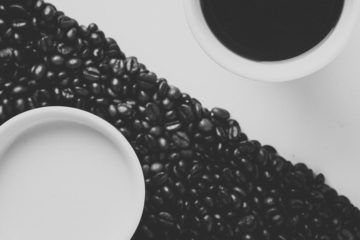People often ask us, “Why do you make a Blend?”, or, “How do you go about making a Blend?”
But we think the first question really should be, “What is a Blend?”
A Blend is simply a mixture of two or more individual coffees.
At Alchemy we define coffees as:
Single Farm Coffees – generally a single variety and single process coffee from an individual farm. This has the highest level of traceability. For example: El Salvador, Santa Rosa Pacamara Honey.
Single Origin Coffees – a coffee grown by small holders from a specific small region and collated and prepared at a mill. This may be a collection of varieties, agronomy practices or processes. These coffees are already ‘Blends’ to some extent before they reach the roastery. Many coffees from Ethiopia, Colombia, Indonesia and Co-ops are produced this way. For example, Brazil, SanCoffee Chocolate Blend (coming in March).
Generic Coffees – these are coffees with almost no traceability from a single country but from many farmers with varying varieties, processes and farming practices. For Example: Brazil Santos or Colombia AA.
At Alchemy we never use generic coffee and currently about 80% of the coffee we roast is the first category – Single Farm Coffee. We like to know as much as we can about the coffee we roast. For some origins like Ethiopia and Colombia it is very rare to get Single Farm Coffees.
Once the coffee gets to the roastery there is a decision to make – is the coffee for filter or espresso?
All of our filters remain unblended. But for espresso there are two reasons why we may make a blend sometimes:
1) Flavour Reasons
When we are making an espresso coffee we always start with a single bean and ask – “Is there anything that this coffee doesn’t have?” Here we are looking at:
Body, Mouthfeel, Sweetness, Acidity, Clarity, Balance, Flavour, Aftertaste.
It is not unusual for a coffee to be lacking in one of these and this is where blending can come in. Adding a coffee with pronounced acidity, a fruity flavour and sweetness to a coffee with high body, mouthfeel and a strong flavour of chocolate can create a great, balanced espresso. The sum can be greater than the parts.

2) Commercial reasons
There are a number of commercial reasons to make a Blend rather than a Single Farm coffee and these reasons can come from either the customer or the roaster. From the customer side we often meet café owners who want the consistency, balance and reliability of a Blend and are wary of Single Farm coffees, thinking that they may not taste as rounded as a blend or may be skewed towards one end of the spectrum (possibly Acidity) and lack balance.
From the roastery’s perspective we may choose to make a Blend because there is simply not enough of a particular Single Farm Coffee to meet demand.
One of the benefits of our high level of traceability is that we can narrow our selection down to very small, specific and great tasting lots – but this is not good for volume. For an espresso coffee that may need to last up to 6 months. There might just not be enough coffee to go around and blending can be a good solution to this.
How to roast your Blend
There are 2 ways to make a blend in a roastery:
Pre-roast blending,
where you blend the green coffees to the correct proportions prior to roasting, and then roast all of the components together in one batch to a common roast profile.
Post-roast blending,
where you roast each component individually to their own roast profile, and then blend the components together in the correct proportions to achieve your desired blend.

This picture shows our team taking a much-awaited shipment from San Sebastian in Guatemala. We requested 24kg bags instead of 69kg and we were so pleased to see them!
For speed, efficiency and cost saving, many roasteries choose to pre-roast blend. At Alchemy, we have never done this. We believe that each coffee has different properties such as moisture content, hardness or density, and that means they each need their own personal roast profile to really shine and achieve their full potential. We then taste them individually, measure solubility and adjust the profile of each coffee until we are happy.
At this stage we also test the blended coffee to see if the components “play nicely with the other children”, before we sign off and release the blend as ready for sale.
You wouldn’t roast a turkey, a chicken and a quail in the oven at the same temperature for the same time; when the chicken was done the turkey would be raw and quail would be burnt. It’s the same philosophy for our blends.
The Alchemy roasters do have another rule – no more than 3 different coffees in a blend. This is how we can ensure that our blends keep their signature features.
Think of it this way, there are approximately 120 beans in one 18 gram dose of espresso. That’s 7 beans in each gram of coffee! So if you had 6 coffees in a blend, equally proportioned, you only have 20 beans from each component. In one dose you could end up with 24 of bean A and only 16 of B and those proportions could switch in every shot! it’s easy to see how you could lose your flavour profile that way!
We know of some larger roasters that blend up to 20 coffees to get year-round consistency – you never really notice the contribution of any one component. We would prefer that you can taste the seasonality and freshness of each coffee in the blend.
Every fortnight we are adding to our A-Z of Coffee. Next time B is for Balance.
f you would like to try our coffee, then you could visit our cafés in Shoreditch or in the City of London, or we offer home delivery here. If you need café supply then take a look here.
This video shows our trip to source with one of our Direct Trade partners, Estuardo Falla, at Finca San Sebastian. Estuardo is a leader in Guatemala’s coffee industry, and we are proud to work with him. Take a look behind the scenes at his farm.




